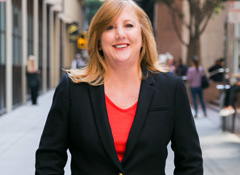Why visual corporate financial statements lead to more engagement
Visual content is key for companies at the top of FTI Consulting’s annual list of FTSE 100 brands most successfully using social media for corporate financial statements. Diageo, BP, GSK and Tesco are ranked as some of the most engaging brands, mainly due to their use of rich media, the agency reports.
For its fifth annual report, compiled between December 2016 and January 2017, FTI Consulting claims that there is a 105% increase in interactions with ‘results content’ in comparison to that of 2015.
This increase is not across the board – the top four performing companies were responsible for 42.5% of all engagement with results posts. Diageo is ranked first with BP, GSK and Tesco comprising the rest of the top four.

FTI Consulting’s 2017 list of the best social media use featuring 69 of the FTSE 100 Source: FTI Consulting
Companies that moved up most from 2015 include Tesco (+41), HSBC (+38) and Taylor Wimpey (+36). Those that moved down the list the most include Intercontinental Hotels Group (-44), Vodafone (-44), Dixons Carphone (-32).
Ant Moore, senior managing director at FTI Consulting, says those generating most engagement have led their PR initiatives with visual content.
“Engagement is being driven by companies using visually engaging content, including infographics, GIFs, live streams, quote cards and video. The leading companies are converting traditional results-related content into bite-sized social media-friendly posts across Twitter, LinkedIn and YouTube that use innovative ways of engaging their audiences, through organic reach,” he continues.
Here are the three things top companies did to increase engagement, according to the report:
1.Use eye-catching infographics
Top listed Diageo encouraged engagement with ‘beautifully presented infographics and imagery’. These visuals can be particularly useful as they can be produced in advance of a corporate announcement and be re-purposed for other corporate materials.
2.Use integrated and rich-media content
Aviva utilised the “whole spectrum” of rich media content to communicate the company’s results, ranging from a hyper-lapse video, to a live stream, infographics, fact cards, quote cards and photos.
The report states: “Investment in original rich media content increases the chances of your content being noticed, read and engaged with – and ultimately increases the penetration of your message.”
3. Multiple posting
Repetitive posting of these types of content can increase the lifespan of a Tweet and reach new audiences, across different time zones and without additional investment. “Multiple posting of the same Tweets allows BP, Mayor of London, Women in the World and others to increase shelf life of their content on Twitter – the average lifetime of a single Tweet is just 18 minutes,” it states.
Effective social media strategies help brand building
Pearson came 23rd on the list and jumped up from 49th spot last year. Tom Steiner, director of corporate media relations at Pearson, says increased social activity in this space has helped with brand building, particularly as it looks to focus the brand from a B2B to a B2B2C model.
He adds: “FTI Consulting’s survey is a useful benchmark for us and we are pleased to see Pearson making progress on last year.
“From a corporate and financial perspective, we’ve built a strong following on our primary Twitter account @Pearson as well as other dedicated handles. We have used social media as a tool to communicate financial results and company news for several years. It’s another important means of transmitting information in a timely and transparent way.”
- To rank the companies, FTI Consulting analysed the channels and feeds of the FTSE 100 companies across Twitter, LinkedIn, YouTube and Slideshare. It considers these most relevant to corporate communications and financial results reporting.
- Three elements of results-related content were then analysed by the data and insights team at the agency, including volume, quality and impact of the Tweets.
- The research is based solely on publicly available online information; no interviews were conducted for the report.







